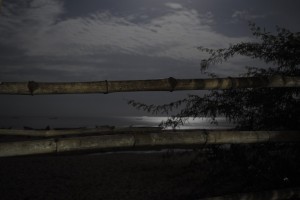How to take good photographs in night?
If your answer is “by using flash”, then please pay attention to this article.
There is something wonderful about DSLRs, that is, their ability to see light much beyond the capacity of the human eye. The shutter speed of the camera adds to this effect. If you keep the shutter speed open for longer durations, more light comes inside the camera and it is able to see the subject more clearly than our eyes can normally do. The photographs taken in low light are often dramatically different and creatively stimulating than they would naturally look in broad day light. On the other hand, flash just spoils the fun and gives the photograph a flat and unappealing look in most cases. So if the subject is stationary and there are no bursts of light coming on the camera in between, better switch off the flash and take a different approach. Photography classes at accredited online schools can also teach you how to take advantage of dark nights using long shutter speeds and simply adjusting the camera’s exposure.
So here is how we go ahead with shooting a photograph in night, without a flash. Let’s begin with the equipment first:
1. Camera: A DSLR with decent sensitivity.
2. Tripod: A must since you need to fiddle with low shutter speed and in such cases the camera must not shake if blurs and ghostly images are to be avoided. If tripod is not available, try to use a support which will keep the camera stable n still.
3. IR Remote: If the shutter speeds are very low, or if you are taking photos in bulb mode, a Remote comes very handy as you cannot keep the shutter button pressed for say, 5 minutes without shaking the camera. Comes quite cheap, usually INR 400.
4. Patience: Remember, its night photography; you need to wait a lot.
Procedure
First of all, bring the camera settings to Manual, or at least Shutter priority mode. The reason behind this is, when the light conditions are not favorable, the camera tries to boost up the ISO levels to take the photographs and in the basic DSLRs, any ISO setting above 800 will result in a grainy image due to loads of noise. So better do the thinking yourself, keep the camera in Manual and fix the ISO to say 200 or max 400. If Shallow Depth of Field is not an issue then keep the aperture fully open. If Depth of Field is required, set it at around f7-f11. Since it is dark, the camera may find it difficult to Auto Focus, so it is better to switch off auto focus and try to focus manually.
Once you are set, get the best vantage point and mount the camera on the tripod. To get the optimum exposure, you need to fiddle with the shutter speed. Keep lowering the shutter speeds and start taking test shots (this is where patience comes into picture). After a few shots, you will have a faint idea of approximately what shutter speed is required. If it is less than 30 sec you can take it with the settings. But it may so happen that the camera needs much lower shutter speeds than the lowest shutter speed rating. In that case, you need to switch to the Bulb mode, that is, the shutter will open with the first click and will remain open till the second click. Use of a remote is a must in this situation as exposure time may be as high as 15-20 minutes (I have seen photographs with exposure time of 45 minutes or more!). Here everything boils down to how good your instincts are. Estimate an exposure time you will need, set the bulb to on, press the shutter open and just lie in wait. As you reach your time, press the shutter close again.
In long exposures, camera usually takes as much time to process the image as it takes to take the photograph. So some more patience is required. Wait for the stipulated time and then jump to look at what has come. Voila! The wait was worth it !!!
PS: When you are shooting in the night mode using a tripod, its better to keep the VR mode to off, as keeping the VR mode on when Camera is perfectly stationary can cause some noise. It is always good to switch the VR mode while using a tripod.
PS PS: When shooting in night mode with long exposures, try to cover the eyepiece with something because light can enter from there in and create disturbance. Cannon gives some kind of flap for this and Nikon users can improvise.

This picture was taken in Mahabalipuram on a Dark Night with Shutter Speed of about 20 seconds

I am enjoying the photography lessons very much. Thank you 🙂
Welcome and thanks for the hausala-afzaai 🙂